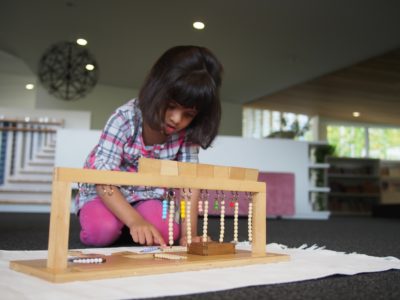
The First 2,000 Days of Life: What the Research Tells Us
Formative. Essential. Foundational.
These words are used frequently at The Children’s School when we answer the question of how important the early years are in a child’s life. In truth, it is impossible to overstate their significance: from birth to age 8 are when a child’s cognitive, emotional and social development explodes, and, experts say, as much as 85 percent of intellect, social skills and personality emerge.
If neuroscience has taught us anything in the last few decades, it is that this period of human development is one of astonishing growth: in the early years, the size of a child’s brain increases fourfold, reaching about 95 percent of that of the average adult. The impact of this growth is profound in another way, for it is at this time that the structure, organization and much of the connectivity of the brain are forged. Between 700 and 1,000 new neural connections are formed every second in the early years, according to Harvard University’s Center on the Developing Child.
As an overabundance of gray matter begins to arrange itself, an extraordinary degree of complexity—far greater than that of your personal computer—emerges in the brain, as a vast communications network is formed between and among the brain’s cells. The bottom line? Yes, brain size matters, but even more important are those billions of neuronal connections, which are influenced by genetics as well as mental, sensory and physical activity.
According to the Harvard Center: “Early experiences affect the development of the brain architecture, which provides the foundation for all future learning, behavior and health. Just as a weak foundation compromises the quality of a house, adverse experiences in early childhood can impair brain architecture, with negative effects lasting well into adulthood.” Conversely, the roots of a strong future for any child lie, no matter what his or her background, in the experience of loving, stable relationships as well an educational environment that is nurturing, responsive and respectful.
Studies such as the famed High/Scope Perry Preschool Study and the Abecedarian Project, have demonstrated the critical importance of high-quality preschools for children’s cognitive and social-emotional outcomes, both in the short and the long term. Specifically, the National Institute for Early Education Research (NIEER) says that curiosity and intellectual capacities, along with those qualities we call character, such as self-esteem, motivation, self-regulation and empathy for others, are influenced powerfully by the school environment. Two large studies published in 2016, in North Carolina and Oklahoma, found that high-quality preschool programs improved all students’ test scores and kept them out of special education classes through at least eighth grade. The key to achieving these lasting outcomes were small class sizes, student-directed learning and lots of open-ended play.
For these reasons, there is a national movement afoot, one that is advocating for a more in-depth and thoughtful approach to the learning experience of children from pre-K to Grade 3. It is born out of the recognition that this time represents a distinct learning and developmental period—one that deserves highly trained teachers, an enriched curriculum and high standards. It also requires our best thinking and resources in order to bring children’s intellectual, emotional and social abilities to fruition.
The Children’s School is proud to stand at the forefront of this movement, a pioneer for more than half a century in recognizing the importance of the early years. With our understanding that children crave respect and want to be taken seriously, we offer our students a whole-souled dedication to their growth and a distillation of the very best educational practices.
So what is the answer to the vital question of what a high-quality early-learning environment should look like? Ours is: The Children’s School.
